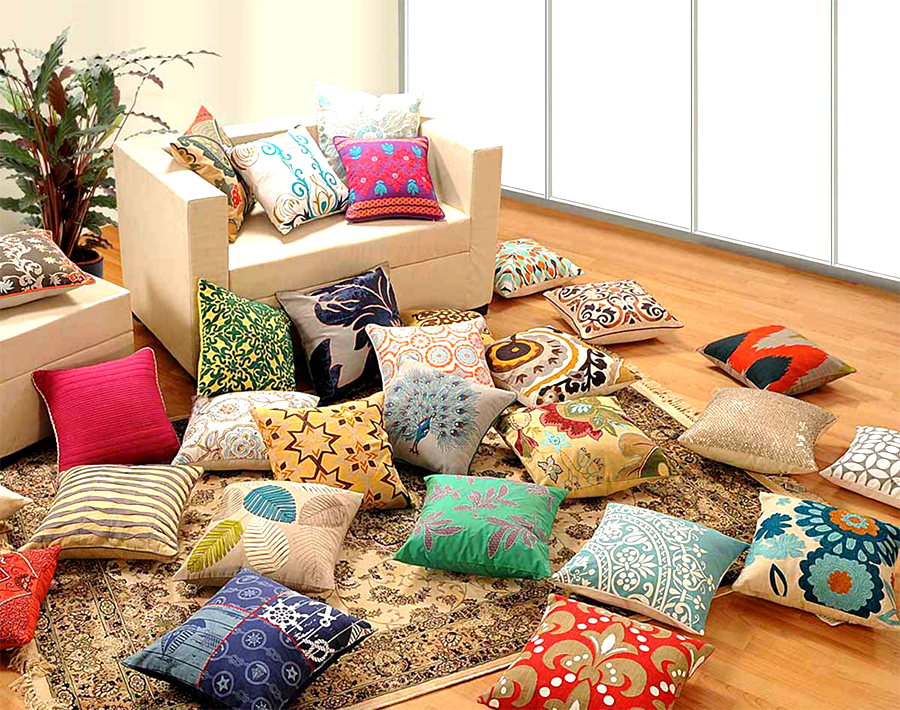 Against the outlook framed last year, 2015 has not proved to be a very fruitful year for medium-level Indian home furnishing exporters. In a short survey conducted by Apparel Online, 60 per cent of the exporters are of the opinion that they have seen less business in this calendar year and it was not up to their expectations; 20 per cent feel that the year was mixed, with headway in some markets, but disappointment in others; and the remaining 20 per cent expressed happiness at their order books. Everyone has identified the reasons for the slowdown and few have done some special efforts to survive. As usual, hopes for business revival in 2016 are there, but without any strong logical base. Most admit that future course of business majorly depends on world peace, as ISIS terror attacks are affecting consumer behaviour in many countries.
Against the outlook framed last year, 2015 has not proved to be a very fruitful year for medium-level Indian home furnishing exporters. In a short survey conducted by Apparel Online, 60 per cent of the exporters are of the opinion that they have seen less business in this calendar year and it was not up to their expectations; 20 per cent feel that the year was mixed, with headway in some markets, but disappointment in others; and the remaining 20 per cent expressed happiness at their order books. Everyone has identified the reasons for the slowdown and few have done some special efforts to survive. As usual, hopes for business revival in 2016 are there, but without any strong logical base. Most admit that future course of business majorly depends on world peace, as ISIS terror attacks are affecting consumer behaviour in many countries.
If one talks about the reasons for the overall downfall in business or region wise market scenario, the first disappointment is that the US market has still not picked up momentum to the extent which the exporters were expecting and it is ‘subdued’. Fall in oil price is being pointed out as one of the main reasons for less demand. Meanwhile, global terrorism is creating a threat to tourism which affects shopping in many countries. Currency devaluation in South America, particularly Brazil, too has impacted markets in this region. Exporters have seen fall in business even in countries like Kenya and Ukraine. Countries like Japan that are not affected much with global issues like terrorism, are suffering from dull economy; so even there the business is slow.
While agreeing with all these reasons stated above, as ground for slowdown in exports, Vaibhav Poddar, Director of Om International, Noida adds some more problem areas. “Apart from these worldwide negative developments, change in policies too impacted Indian exporters. We also felt the heat due to EU’s GSP+ (Generalised Scheme of Preferences) status to Pakistan, as it benefited the country (Pakistan) over the difficult years, particularly in the home segment. Our business was almost 20 per cent down from the last calendar year. To improve business, the company is planning to participate in more international fairs in 2016,” he continued.
“Not only exports, but even the domestic markets were a bit on the lower side in 2015. Things will improve in 2016 as domestic manufacturers are investing in new machines and technology which is making them keener towards newer products, and more varied range. Heavy jacquard, digital prints, and more and more use of velvet are some of the examples that could boost home furnishing market.” – Anurag Kapoor, General Secretary, Home Textile Federation of India (HTFI)
Many companies openly admit that doing any fire-fighting at their end is not really going to help as they strongly believe that things will change only when global economy will pick up. “I don’t think we should see conditions differently in the US and EU. You can’t do anything if there is no demand. Investing in PD or more sampling is something that helps, but only if there is some demand. Things will be clear only after the current unrest situation settles down and some peace prevails at the international level,” says Ashish Anand, Director, The Reed & Shuttle Company, Gurgaon. Some exporters also shared that several buyers had placed orders but are now not keen to receive the shipments or are delaying delivery wilfully. Sumit Tayal of Green Tex, Panipat informed that earlier he was not keeping any ready stock with him, but this year the stock has piled up as buyers are not in a hurry to receive their ready products.
IN 2016, EYE WILL REMAIN ON
India-EU talks on pending FTA
US Presidential Elections
GST in India
Proposed New Textile Policy
Companies working exclusively for Europe are much more adversely affected compared with those companies that are having buyers in various regions of the world. Exporting to Germany, Italy, France, UK and Switzerland, Francis Joseph, Triage Overseas feels that 2015 was much down compared to 2014 but he is hopeful that with more thrust on collections, with the help of international designers, the company will be able to get good orders in 2016.
Get Access to more Market Analysis articles from APPARELRESOURCES.COM.
SUBSCRIBE TODAY
The companies that survived or registered some growth in 2015 have shown pro-activeness in their approach to business, moving with the flow. The main concentration areas have been to analyse weaknesses and improve wherever it was possible. “2015 was okay for us as we welcomed whatever small orders any buyer could offer to us rather than to stick to our minimum quantities,” shares Inder Singh Saini of Pardeep Exports, Panipat, who is exporting mainly to Europe. Happy with business gains in 2015 and expecting 30 per cent growth in 2016, Jayanita of Delhi gives credit to small innovations which converted into good business. “We tried to offer such products and designs which normally our fellow Indian exporters don’t offer, or buyers could not find easily in India, be it different kinds of value addition techniques, focus on efficiency, or better sourcing of raw materials, etc.,” claims Raveen Jain, Director of the company, majorly exporting to the US and Middle East markets.
IRM Handloom & Handicraft, Delhi also improved its sourcing strategy and started buying in bulk rather than in small quantities, as and when required, which helped the company to reduce the price of final product. For next year, its focus will remain on PD. Few exporters also shared that they have entered into markets where earlier they were not doing any business. Though the solutions sound simple, but the fact remains that the overall scenario is tough and things will only improve when the international scenario and world economy will improve, till then exporters need to continuously turn inwards for survival strategy.






